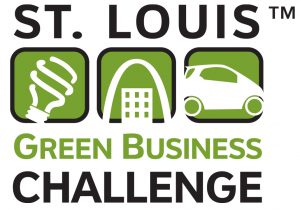Founded in 1879, the Saint Louis Art Museum is a world-renowned fine arts museum known for its outstanding and comprehensive collection spanning 5,000 years of cultures and genres. The Clean Air Partnership is pleased to recognize Saint Louis Art Museum’s air quality-friendly efforts that earned them the esteemed title of St. Louis Green Business Challenge Champion last year for completing work with the Leader scorecard and committing to continued implementation of deeper sustainability strategies.
“The Saint Louis Art Museum continually values the St. Louis Green Business Challenge as a guide to achieve our sustainable goals,” said Maria Kveton, Museum Event Manager and Green Team Leader at Saint Louis Art Museum. “Having access to free tools such as the Virtual Brown Bag seminars and GreenBiz Tracker allows the Art Museum to connect with peers and learn about local green vendors and sustainable initiatives, and it helps us better track and report our efforts.”
During the 2022 Challenge, the Saint Louis Art Museum replaced air handling units in its east main building to qualify for energy rebates and continued to retrofit lighting to energy-efficient LEDs in all Museum buildings. Doing so not only cut down on light pollution but also conserved up to 80% more energy than traditional lighting, such as fluorescent and incandescent bulbs. Additionally, by putting all hot water pumps into a loop system with frequency drives, the Museum helped to save energy by controlling motor speed and output, as well as further reduced energy consumption through improving domestic hot water system flow and heating the water with boilers instead of electricity to improve air quality.
Last but not least, the Museum’s Green Team organized various eco-conscious events and activities, including an air quality-friendly volunteer litter cleanup in Forest Park for Earth Month, a virtual brown bag with recycling updates from the St. Louis City Recycles team, and a Green Living Festival Pop-up with the EarthWays Center of Missouri Botanical Garden that featured festival exhibitors in Sculpture Hall, a tour of the Art Hill flower gardens led by staff of Forest Park Forever, Museum docent tours highlighting works of art made with discarded or reused objects, and a presentation on eco-criticism by art curator Amy Torbert. They also established a checklist to reduce waste at future Museum events.
For more information on the green efforts underway by the Saint Louis Art Museum and how your organization or municipality can get involved in the Challenge, subscribe to the bi-monthly E-Newsletter or visit stlouisgreenchallenge.com, To learn more about the link between sustainability and air quality, explore the Clean Air Partnership’s website, like us on Facebook or follow us on Twitter at @gatewaycleanair.


